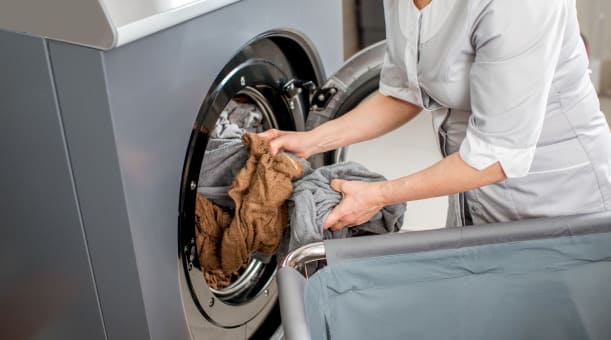Bangkok's commercial laundry employees have a unique challenge: getting rid of a range of stains on clothing from diverse industries. Whether it be from food and beverage spills or oil and grease stains, mastering the art of stain removal is essential for maintaining high-quality service and customer satisfaction. This comprehensive manual will go through Stain Removal 101 and provide laundry experts the knowledge they need to get rid of even the toughest stains.
The Importance of Stain Removal in Commercial Laundry
Bangkok's commercial laundry industry is as vibrant as the city itself, catering to a multitude of businesses, hotels, and restaurants. In this competitive landscape, the ability to effectively remove stains is crucial for maintaining a stellar reputation and client satisfaction.
Understanding Stain Types
To become a stain removal maestro, you must first grasp the different types of stains. Common stains encountered in commercial laundry include food and beverage stains, grease and oil stains, ink stains, and protein-based stains like blood and sweat. Each requires a specific approach for successful removal.
Pre-Treatment
Pre-treating stains is a key step in the stain removal process. This involves identifying the stain type and selecting the appropriate pre-treatment method. For instance, protein-based stains often respond well to enzyme-based pre-treatments, while oil and grease stains may require a solvent-based approach.
Stain Removal Tools and Products
Commercial laundry professionals should have a well-equipped arsenal of stain removal tools and products. These include stain removers, brushes, and specialized detergents designed to target specific stain types. Regularly maintaining and replacing these tools is essential for optimal performance.
Effective Stain Removal Techniques
Now, let's explore some effective stain removal techniques tailored to Bangkok's commercial laundry professionals:
Quick Action is Key
Promptly address stains as soon as garments arrive at your facility. The longer a stain sits, the more challenging it becomes to remove. Train your staff to inspect garments thoroughly before processing.
Proper Sorting
Sort garments based on color, fabric type, and stain severity. This prevents color bleeding and allows for more effective stain removal treatments.
Stain Identification
Identify the stain type by examining the color, texture, and location on the garment. This step is crucial for selecting the right stain removal method.
Test First
Always test stain removers on an inconspicuous area of the garment to ensure they won't damage the fabric. This step is especially important for delicate fabrics.
Enzyme-Based Stain Removal
Enzyme-based stain removers are highly effective for protein-based stains like blood and sweat. Apply the enzyme product directly to the stain, let it sit for 15-30 minutes, and then launder as usual.
Solvent-Based Stain Removal
For oil and grease stains, use a solvent-based stain remover. Apply the solvent to the stain, blot with a clean cloth, and repeat until the stain is gone.
Ink Stain Removal
Ink stains can be challenging, but they are manageable with the right techniques. Apply rubbing alcohol or hairspray to the stain, blot with a clean cloth, and repeat until the ink disappears.
Detergent and Water
For many stains, a high-quality detergent and water can work wonders. Create a paste using detergent and water, apply it to the stain, and gently rub the fabric together. Rinse and launder as usual.
Stain Removal Equipment
Invest in high-quality stain removal equipment, including spotting machines and brushes. These tools can significantly improve your stain removal success rate.
Post-Treatment Inspection
After stain removal, inspect garments under proper lighting to ensure no residual stains remain. Re-treat if necessary to achieve impeccable results.
Stain Prevention Tips for Clients
While mastering stain removal is essential, educating your clients on stain prevention can also help reduce the frequency of tough stains:
Provide Care Instructions
Include garment care instructions when returning items to clients, emphasizing stain prevention tips such as avoiding spills and immediate stain treatment.
Stain-Resistant Products
Recommend stain-resistant products for specific industries like hospitality and F&B, helping clients proactively protect their garments.
Regular Inspections
Encourage clients to inspect their uniforms and linens regularly and report stains promptly. This allows for quicker intervention and better stain removal outcomes.
The ability to remove stains expertly is a crucial one for Bangkok's commercial laundry experts. You can guarantee that your customers' clothes stay in immaculate condition with the appropriate skills, methods, and tools, differentiating your laundry service in this cutthroat market. Offering stain-free outcomes and proactive stain avoidance recommendations can help you win your customers' confidence and loyalty and establish your laundry service as a top pick in Bangkok's bustling metropolis.



